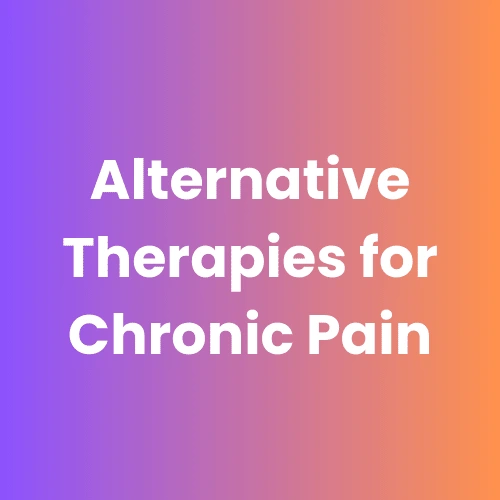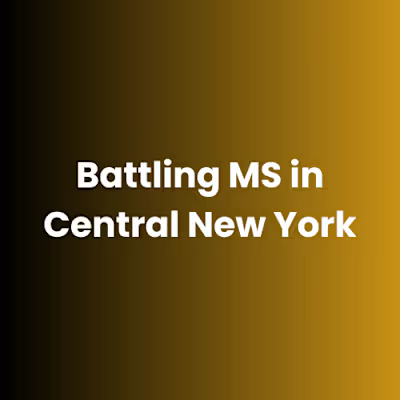Chronic Pain Doesn’t Have To Be A Life Sentence

Chronic Pain Doesn’t Have To Be A Life Sentence
·
14 min read
·
Apr 27, 2020
How chronic pain can teach us to trust the scientific power of our thoughts.
Chronic pain — the dreaded term for “life-ruiner.” Plaguing people for, well, ever, chronic pain has remained something of a medical mystery. What if we took a step back and looked at where this pain actually originates — our brains — and used that as our key to comfort? There’s no single way to use the way we think to help us heal. Rather, a number of non-pharmaceutical healing and coping methods have been backed by study after study as effective pain-dissolvers. Finding ways that we can help, or even eliminate, chronic pain may be more important than ever right now. This recent Psychology Todayarticle by Dr. Boleslav Kosharshkyy, who specializes in pain management in New York City, emphasized the struggles many chronic pain patients could be facing in the wake of the COVID-19 crisis. “Social engagements and social support are of paramount importance. Social distancing takes away many of these features,” Kosharskyy said.
Social isolation could mean worsened pain for patients, and a study referenced in the article determined social interaction is deeply beneficial for easing chronic pain. Lena DeLeo, an art therapist in Syracuse, New York, notes how common loneliness is for her chronic pain patients.
“It can be really stressful, damaging, and isolating. I hear a lot from people who have chronic illness who feel lonely — maybe their friend groups aren’t sure how to respond to them, and it becomes all about their illness,” DeLeo said.
So, how can chronic pain sufferers manage — not only in this time of heightened stress and social distancing, but overall? Techniques like meditation, mind-body medicine, yoga, expressive writing, and even podcasts are just a few methods that are becoming more recognized for lasting, physiologic pain relief.
Debbie Kirk, an Ohio resident suffering from multiple autoimmune diseases, is no stranger to physical pain and the emotional damage it causes. “It can get depressing. You made plans a week from tonight to go out with friends for dinner and you’re doing great. The night comes and two hours before — boom — you’re in bed. It can be very lonely,” Kirk said.
Aside from the emotional impact, chronic pain often causes a sense of desperation in patients. “Throughout the years I went through several medications, several shots in my feet and in my shoulders…I would’ve stood on my head in a corner to get rid of the pain,” Kirk said.
Recently, a study released by the Center for Disease Control concluded that 50 million adults living in the US are dealing with some form of chronic pain. While the concept of using mindfulness methods isn’t new, it’s an often underrepresented treatment tool. Numerous findings show that practicing mindfulness for chronic pain can alter the physical functions of the brain. This 2015 study found that mindfulness practices resulted in a notable decrease in pain. In fact, results showed that mindful meditation changed physical cognitive shifts in the brain — even heightening the function of important sections of the brain. Neuro-imaging studies focused on the pre-frontal part of the brain have also found that certain emotional qualities influence the pain reaction, according to this 2015 study conducted at McGill University Health Centre.
Maryann Piazza, a Syracuse, New York therapist and social worker who treats chronic pain, explains how the mind can use pain as a distraction for deep emotional issues. “The body begins to help us by going, ‘oh, you’re having a problem in assertiveness, and you ignore it? Let me put that in your hip. Let me put that in your shoulder.’ The body begins to hold onto the memory,” Piazza said. “The mind-body is creating a way to cope with something, so it creates an answer.”
Dr. John Sarno, a pioneer (if not the pioneer) of successfully treated mind-body medicine, referred to repressed emotions that caused physical pain as Tension Myositis Syndrome (TMS). Sarno’s claim was that the tension produced by repressing these emotions depleted blood flow, resulting in oxygen deprivation to certain areas of the body, causing chronic pain.
Dr. David Schecter, who practices family and sports medicine in Culver City, California, is well-versed in the science of pain. Having studied under Sarno, Schecter uses mind-body healing techniques to help his patients. Understanding the brain’s narrative for pain is key in treating it, he says.
“When most physicians look at pain, they purely look at symptoms, but they don’t look at the patients. The narrative is what’s been going on in the patient’s life to encourage the onset and development of the symptoms. The psychosocial history is an extremely important part of assessing chronic pain,” Schecter said.
He conducts a thorough health check to make sure there aren’t any obvious structural abnormalities that could cause a patient’s chronic pain. From there, it’s time to take a look at how the brain is processing sensations. Focusing on neural pathways is at the core of mind-body medicine. The pathways, which communicate with the nervous system, have a fantastic memory for pain.
“These neural pathways are enhanced communication between a part of your body [that’s hurting] and the brain. It leads to amplification of signals, hypersensitivity and the like,” Schecter said. “Breaking those pathways begins to be one of the key steps — thinking differently, talking to your brain, affirmations.”
By retraining the neural pathways through dedicated mindfulness practices like Schecter suggests, this begins to have a massive effect on getting rid of chronic pain. Hope, a simple yet necessary element of healing, plays a huge role in how Schecter conducts his treatment of patients.
“Making the diagnosis [of TMS] shifts the patient’s focus from the idea that there’s something structurally or biochemically wrong with them to the idea that there’s hope, and the idea that the mind, brain and emotions are playing a huge role — and that all those physical conditions can often be better dealt with from the top-down, rather than the bottom-up,” Schecter said.
As simple as it sounds, tackling chronic pain with an attitude of hope versus fear is huge in healing. Regardless of the origin of the pain — whether it be mind-body or caused by another factor — starting your healing from a positive place can influence your journey. A 2017 study demonstrated the “upward spiral model of positive affect,” a visual representation of thoughts connected to chronic pain perception. Indicating future control of pain flares based on various positivity-based thought processes, the model is a fascinating visual of how we can control pain.
Patients use these mental techniques even if they receive physical treatment. Dr. Julie Hughes, a Syracuse physical therapist and pain recovery coach, understands each unique pain experience her patients go through.
“We look at goal-setting, and then we try to start making a plan to gradually get there. There isn’t one certain exercise or certain movement. The problem can become if they’re forced to do something that they don’t feel safe doing, that’s actually increasing that protective response, and so they’re going to have more pain,” Hughes said.
While it’s important to tailor physical movements for each patient’s diagnosis, Dr. Hughes explains that it’s also necessary for each patient to understand what their pain represents to them emotionally. “Happy thoughts” and the actual belief that patients have about their healing are two separate things.
“That’s a big thing — What are their beliefs, what are their thoughts, what does this pain mean to them. It’s not just ‘think positive.’ You have to believe it. You have to think and believe it before it does anything,” Hughes said.
A review of physical rehabilitation for pain and musculoskeletal patients found mindfulness combined with physical therapy to be effective in decreasing the level of pain the patients felt.
Physical therapy can also be very helpful for something you might not associate it with: pelvic pain. In 2015, a study found that 1 in 3 women suffered from some form of chronic pelvic pain, ranging in age from teens to forties. Often perplexing when an immediate and curable cause is not found, chronic pelvic pain begins to take a massive toll on the mental and emotional health of a woman — for obvious reasons.
Syracuse pelvic floor physical therapist, Jeanne Ciocci, describes how chronic pelvic pain can be treated through physical manipulations along with stretching.

“From the physical therapy lens, we look at pelvic pain through the rib cage, or the breathing diaphragm down to the knees. We’re assessing the muscles in those regions because of the fact that tension in those areas can end up impinging on nerves and cause problems in the perineal area,” Cioci said.
Just as some people hold stress and tension in their shoulders and neck, other people naturally tense in their pelvic region. Cioci also noted stress and different tension-holding patterns as a result can be directly linked to chronic pelvic pain.
“Stress plays a role in pain or discomfort anywhere in your body, but very often people with certain diagnoses like interstitial cystitis [a bladder condition that can cause pelvic pain], stress will cause a flare, and that flare causes increased tension within those muscles,” Cioci said.
Abigail Steidley suffered from life-altering pelvic pain in her 20s for several years before turning to mind-body practices to relieve her pain. Now a Martha Beck certified life coach in Colorado helping other women heal, Steidley can connect with her clients on a personal level because of her own past experiences.
“ [I] Definitely tried every medical intervention known to man — also every herbal intervention, every alternative intervention. What was panic-inducing was that those really didn’t help, that was terrifying. I felt a lot of panic, a lot of fear, depression, anxiety — despair, for sure,” Steidley said.
After being referred to a breathing specialist, Steidley began to learn the connection between stress, emotions and chronic pain — and it was her key to comfort. After reading Dr. Sarno’s books on TMS, Steidley was bolstered by the scientific research on the subject, which aided her healing process.
“There was something helpful about a western medicine doctor who had a logical side, too. It helped that little skeptical part of me start to really see the possibility. It gave me a lot of hope. That was when I started to believe it was possible,” Steidley said.
Similarly, Miriam Raquel Feldman, a Martha Beck certified life coach out of Chicago, once battled chronic health conditions along with pain. Now helping women globally get their lives back like Steidley, Feldman practices mind-body healing and relationship coaching. Before she could help others heal, she had to experience the frustration of suffering. After going through appointment after appointment, with no real answers, she was exasperated.
“It’s that story of ‘I feel really lousy, can someone fix it,’ and spending so much money and so much time in that direction,” Feldman said. As she discovered literature on mind-body healing, she began to notice her pain changing locations — a hallmark sign of emotion-fueled pain. Now, with her chronic pain gone, she’s passionate about the art of emotional release.
“It’s all connected. I think we don’t realize when we’re holding muscles, when we’re in the freeze state — it’s so subtle,” Feldman said. “Our bodies hold trauma form the past.”
There are various ways to release harmful emotions, one of which is writing — but it’s not the kind of writing we’re used to. John Evans, a writing clinician and integrative health coach in Durham, North Carolina, has dedicated his time to creating a writing program to release harmful emotions — ones that could be causing chronic pain. Passionate about the connection between writing and wellness, Evans has taught multiple workshops on the subject at Duke Integrative Medicine. He states that his writing method is far different than journaling, and calls his format expressive writing.
“The danger about journaling is that it can keep you locked in your pain,” Evans said.
Evans aimed to create a writing protocol that was progressive instead of repetitive, as journaling can often be. Reframing repressed emotions by writing them down on paper lifts a heavy weight off of the mind.

“Your neural pathways learn a way to behave. You have to break that. When you get triggered, the amygdala is sounding the alarm,” Evans said. “By reframing our experience with whatever caused our pain, we don’t have to fight or flee — we can stay.”
Healing from chronic pain is a step by step process, no matter what approach you take. Maria Manna, a mental health counselor in Ithaca, New York, understands the boundaries of pain. Specializing in chronic pain therapies, Manna works with her patients to explore activities they’ve given up due to pain. “You can have a visceral understanding of what your pain is, what the parameters and the boundaries are — once you have that established, you can start messing with those boundaries through a mindfulness-based experience,” Manna said.
Debbie Kirk’s chronic pain was eased when she looked at more natural treatments, echoing what Manna describes. Along with using CBD oil, Kirk has found that continued movement has noticeably eased her suffering.
“Just moving, whether it’s yoga, walking, stretching. I think that and mindful practice — meditation — those things have, all together, helped me the most,” Kirk said.

Manna emphasizes how continued movement can do wonders for pain. She helps her patients begin to participate in small activities they had deemed off limits. These tiny improvements end up opening large doors for those in pain. “People who felt like they couldn’t bend over and pick something up off the floor may be able to do that, and then there’s a cascade of other things that are positive that happen.”
Whether it’s movement, writing or deep introspection, there’s one theme that comes up again and again — release. Art therapy is yet another method of release for chronic pain patients that can significantly improve symptoms. Not surprisingly, art therapy also eases anxiety in chronic pain patients, stated in this 2018 study.
“When I think about art therapy in regards to chronic illness or pain management, I think about how an illness can take over someone’s identity and provide a new label for a person,” DeLeo said.
DeLeo lets her patients take the lead when it comes to the form of artistic expression they want to pursue. Using a wide variety of art forms, DeLeo has found mask and doll-making to be a popular choice among her patients.
“Making a mask could be a really powerful intervention. Making dolls also can be powerful. It could be an externalization of yourself of the illness,” DeLeo said.
Identity is intertwined with chronic pain and illness because patients become their pain. Past times dissolve, relationships are strained and hope for the future dwindles. Often after patients greatly improve or heal from mindfulness techniques, they become passionate about spreading the word. The brain science behind healing your pain may not be new. In a medical community that often ignores its importance, mindfulness is finding its place in the modern medical setting. While Schecter still believes pain medicine needs to examine the role of emotions more, he sees the healing power of the brain becoming more accepted — little by little.
“There’s more research data, more general interest,” Schecter said. “I feel like the work that Dr. Sarno pioneered 40 years ago, and that I’ve been doing for a very long time, is slowly being caught up to by mainstream medicine.”
Letting Go: Hope For Chronic Pelvic Syndromes
“We’ll have a success story,” the physical therapist told Shelby Hadden.
Stunned, Hadden, a college student at Syracuse University, had never encountered this kind of enthusiasm from the countless doctors she’d seen.
Hadden had visited her fair share of OBGYNs, all of them flummoxed as to why using a tampon resulted in excruciating pain. The fear that she’d never be able to have sex without pain weighed on her terribly. Countless doctors hadn’t been able to pin down why she had this pelvic condition — vaginismus. One told her she was too “uptight.” Another told the then 19-year-old Hadden that she should have a glass of wine before sex, to loosen up. It was at one of those many visits that a doctor absentmindedly handed her the business card for the pelvic floor physical therapist, telling Hadden that maybe she could help.
And that’s how she ended up at the physical therapist’s office. As the woman explained to Hadden that she did have a medical condition — pelvic floor dysfunction — and that it was 100% curable, Hadden finally felt hope rise within her.
While Hadden still has generalized pelvic floor dysfunction, her vaginismus evaporated with physical therapy treatment. Letting go of the negative emotions Hadden had about her vaginismus helped her heal. Releasing the shame that her condition had given her was a huge breakthrough.
“It played such a huge role,” Hadden said. “There was a lot to unpack, from all those experiences — the feelings I had about my body and sexuality. I had so much fear.”
Since healing, Hadden has directed an animated short film about her experience with vaginismus. Winning many awards, Hadden’s documentary Tightly Wound details her journey with vaginismus as a teen to how she’s doing now. A syndrome society has often deemed shameful, Hadden is a voice for women who are struggling with similar issues. Not only is her message informative — it’s one of healing and hope.
Podcasts For Pain Relief
Within the past two years or so, multiple podcasts have emerged to help those suffering from chronic pain through mind-body methods. Here are three effective and thoughtful examples to turn to when you have a flare:
The Cure for Chronic Pain — This gem of a podcast is led by psychotherapist Nicole Sachs, LCSW. A former chronic pain patient, Sachs got rid of her debilitating back pain from a very visible, structural issue using mind-body work. With episodes that cover repressed emotions, patient success stories and Q&A’s, Sachs explains the power of brain science in a way that everyone can understand.
Like Mind, Like Body — Created by those at Curable, this informational podcast features interviews with those who have cured their chronic pain through mind-body techniques. Many of the episodes also feature interviews accomplished mind-body doctors, one of which is Dr. Schecter. Hosted by Laura Seago, also a chronic pain survivor, the podcast is the perfect blend of science and personal stories.
Mindbody Mastery Podcast — Hosted by Katelyn Michaels, L.Ac., this podcast emphasizes the power of emotions and how they’re related to pain. Also fully recovered from chronic-pain through mind-body work, Michaels offers listeners hope of freedom from pain. The podcast also features interview episodes with mind-body practitioners, along with hopeful recovery stories.
Four Steps to Expressing Yourself
Expressive writing, an effective way to release negative, repressed emotions that can lead to chronic pain. John Evans’ expressive writing program has four steps you can follow to begin the release.
1. Write down the traumatic experience that’s happened to you.
2. Go back and re-write the experience. While this might be painful, writing it for a second time can lead you to remember more details.
3. Write down the experience from a different perspective. For this step, writing in the third person can be helpful.
4. Write the experience down, but this time create a positive outcome that you can takeaway.
Evans’ stance on journaling is that it can prevent healing due to its repetitive quality. In a way, you’re just reliving the trauma over and over. “Unless you change your perspective on what happened and create a satisfying story that you can take with you into future, you’re not going to be able to get away from that pain,” Evans said.
Like this project
Posted Mar 18, 2025
Chronic pain — the dreaded term for “life-ruiner.” Plaguing people for, well, ever, chronic pain has remained something of a medical mystery. What if we took a…
Likes
0
Views
5




